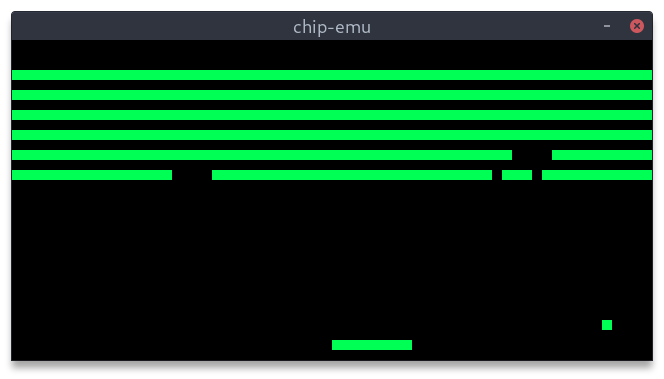
Click here for the repo where you can download chip-emu.
Notes on writing my CHIP8 interpreter
Over the summer I've been building a CHIP8 interpreter. This is the recommended entry point to emulator development, and it doesn't take awfully long. I'm 26 hours in on mine and more experienced programmers have done it faster.
It's a very fun project especially if you are fascinated with retro computing and assembly language. I think the mistakes I made are the most interesting part. Over the course of the project I made many little logic errors and also some sketchy design choices, of which I've fixed all of the former type that I know about, and am working on the second.
Confusing different variables. The Chip8 programming language resembles a processor instruction set but is simpler. Often an instruction includes a byte operand X. In some instructions this byte is the operand and in others, the operand is in register X. It was very easy to trip up and apply an operation to X when it should have been VX.
I found these and fixed them quickly for the most part. The one I was stuck on the longest had to do with setting the frontend modifying the keypad up/down flags. In the functions implementing instructions which check if a key is up or down, I was checking for key X instead of the key stored in VX, and not only that, I was checking the registers instead of the keypad flags. I just fixed this last week with fresh eyes after having taken a break from this project and this was all that stood between me and the games being playable.
Anyways, I think the experience of troubleshooting these bugs, and giving a close read to how the instructions are supposed to behave, will help me make these kinds of mistakes less often in the future and fix them faster.
Wasteful way of simulating clock speed. The interpreter itself has a function "cycle()" that the frontend calls. My frontend uses a high precision C++ timer to count up to 1429 microseconds, because this gets the desired clock speed, run a cycle, and redraw the display if the draw flag is set, etc. This could and will be done better. I plan to rewrite the logic a bit so that cycles are executed as fast as possible up to when the draw flag is set next.